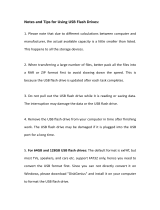
7
Projector Features and Main Functions
Features Common to All Models
z Mercury-free Hybrid Light Source
A CASIO-original laser and LED hybrid light source delivers high luminance from 2,500 to 3,000
lumens. This projector does not use a mercury lamp, making it environmentally friendly.
z A wide selection of input sources
Analog RGB, composite video, S-video (XJ-M Series only), component video (Y·Cb·Cr, Y·Pb·Pr),
and HDMI input sources are supported.
z Intelligent Brightness Control function (Eco Mode)
The projector senses surrounding light levels and adjusts projection brightness automatically as
required for efficient low-power operation. (Requires “Eco Mode” setting to be set to “On (Auto)”.)
z Direct Power On
The projector can be configured to turn on automatically and start projecting as soon as it is
plugged into a power outlet.
z Presentation Timer
The presentation timer is a countdown timer that shows the amount of presentation timing
remaining on the projection screen.
z Firmware update and user logo image data transfer
Firmware (software in the projector flash ROM) updates and user logo images can be transferred to
the projector from a computer as required.
USB Model Features
USB Models: XJ-A147, XJ-A247, XJ-A257, XJ-M146, XJ-M156, XJ-M246, XJ-M256
z Projection of image, movie, and other types of files (File Viewer)
The projector’s File Viewer can be used to open and project the following types of files located in
projector internal memory or on a USB flash drive connected to the projector: image files (JPG,
PNG, GIF, BMP), movie files (AVI, MOV, MP4), presentation files (ECA, PtG), PDF files.
z Projection of computer screen contents over a USB connection (USB Display)
Connecting the projector to a computer with a USB cable enables projection of the computer’s
screen contents. This supports projection of screen contents of even small computers that have
only a USB port, but no RGB, HDMI, or other type of video output terminal.
z Graphic Scientific Function Calculator Connection
Certain CASIO graphic scientific calculator models can be connected directly to the projector’s
USB-A port for projection of the calculator screen contents.
z Projection of images from a computer or smart device over a wireless LAN connection*
The projector is configured as an access point, a computer or smart device can connect directly to
it over a wireless LAN connection. Or a computer or smart device can connect over a wireless LAN
connection via an existing wireless LAN access point. Both screen output and audio output are
supported while a computer is connected.
z Projector control using a computer or smart device over a wireless LAN connection*
The projector can be controlled from a computer or smart device connected to it over a wireless
LAN connection.
* For details about wireless LAN connection, see the separate “Network Function Guide”.




















